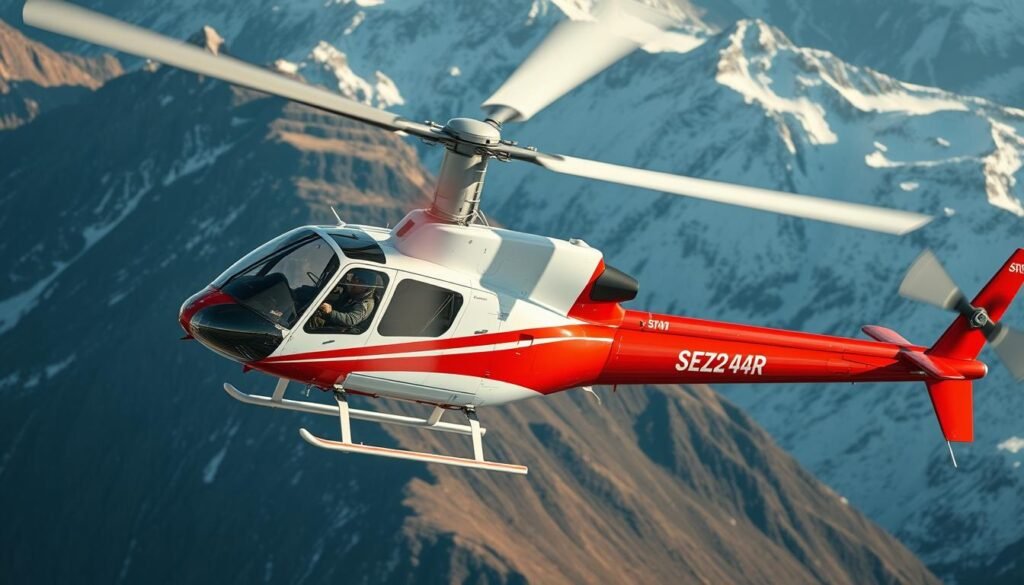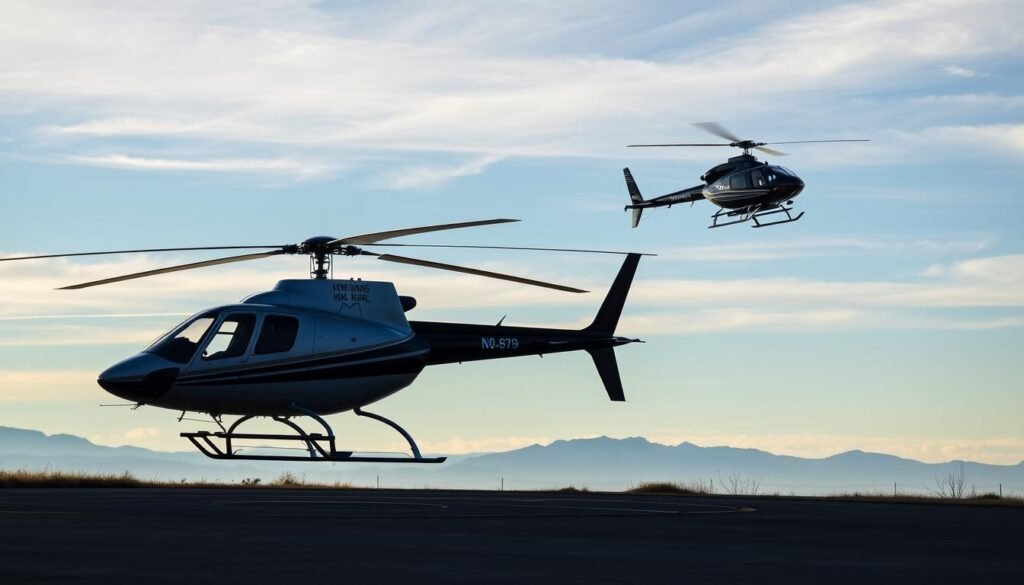This guide breaks down what National Guard helicopter pilots earn while serving stateside—and why it’s a smart path for those seeking stable, hometown aviation careers. It covers base pay, flight allowances, and how part-time drill income compares to 30+ day active duty orders.
Readers get clear facts on DFAS-based compensation, prorated drill rates, and ACIP flight pay, which typically ranges from $150 to $1,000 monthly. It also explains how BAS, BAH, TSP matching, and retention bonuses can significantly boost total income.
Initial training usually involves 2–3 years of full-time service before transitioning to part-time status. That shift affects monthly earnings but builds experience and eligibility for better benefits. For a broader look at how pay formats vary across roles, see our Helicopter Pilot Salary Per Hour, Month, and Year.
The article also frames state-level opportunities and the Air National Guard landscape for career-minded aviators. It’s designed to help pilots compare duty income to airline work and plan for a long-term aviation career close to home.
Key Takeaways
- Base pay follows DFAS tables and is prorated per drill period.
- ACIP, BAS, and BAH boost total compensation during qualifying orders.
- 30+ day orders give the same pay and benefits as active duty.
- Initial full-time training often takes 2–3 years before part-time service.
- TSP offers up to a 5% government match; retention bonuses may reach about $35,000 yearly.
For a full breakdown of helicopter pilot roles across sectors, see our Helicopter Pilot Pay Guide.
Why This Service Matters: A Stateside Aviation Career With Steady Pay and Benefits
A hometown aviation role blends consistent drill schedules with benefits that support a long-term career plan.
Units emphasize part-time service with near–full-time style benefits. Members serve close to home and get a predictable rhythm: two drill weekends that count as four active-duty days each month.
The structure lets a pilot align civilian job shifts and airline rosters around duty. That stability creates a clear plan for building flight hours while keeping family life steady. To compare hourly, monthly, and annual pay formats across roles, visit Helicopter Pilot Salary Per Hour, Month, and Year.
State programs often add tuition help and extra incentives. These perks raise the net value of the job beyond headline base pay and help with education and licensing costs.
- Reliable monthly drill income and benefits that accrue even in part-time status.
- Unit matching places pilots on aircraft and missions that grow experience.
- Flexible scheduling lets planners pair drills and extra flight days to boost proficiency and earnings.
| Feature | What it means | Impact per month |
|---|---|---|
| Drill weekends | Two drills = four active days | Predictable per month income and schedule |
| State benefits | Tuition and incentives vary by state | Reduced education costs and added value |
| Aircraft assignments | Match roles to experience | Builds hours and mission depth |
For official aviation career paths and pilot roles, visit the National Guard aviation careers page
National Guard Helicopter Pilot Pay
Most compensation for part-time aircrew comes down to how many duty periods are credited each month. For provider-specific benchmarks, explore Air Methods Helicopter Pilot Salary and Bristow Helicopters Salary Breakdown.
How Drill-Period Pay Works Per Month and Per Year
Pay is credited by four-hour duty blocks. Each block usually counts as one pay period; most duty days earn two periods. That makes monthly planning straightforward: more credited periods equal higher monthly earnings.
Part-time calculation: DFAS base rates are divided by 30 and applied per credited period. Units may credit extra periods, but heavily used months often trigger full-time orders, which changes the calculation to a full monthly rate.
Base Pay by Rank and Years of Service
Base income is set by DFAS tables and rises with rank and years service. For part-time pilots, the 1/30th prorate per period ties annual estimates to actual duty days.
This means promotions and added years of service increase the value of each period and lift yearly earnings without changing drill frequency. For current military pay tables and entitlements, visit DFAS.
Aviation Career Incentive Pay Tiers and Eligibility
ACIP, or flight pay, stacks on top of base pay. In part-time status it is prorated the same 1/30th per credited period. Typical ACIP ranges from about $150 to $1,000 per month when paid at full rate.
On orders of 30+ days the member receives full base monthly pay and full ACIP for that month. Eligibility depends on flight status, aircraft category, and policy gate thresholds set by the air service. For real-time salary comparisons, visit Salary.com’s helicopter pilot data.
- Duty days are the operational lever: coordinate schedules to manage monthly earnings.
- Exceeding utilization points may convert a member to full-time orders, simplifying pay to standard monthly rates.
- Unit bonuses or targeted incentives may complement base and flight pay on occasion.
| Item | How it’s calculated | Impact |
|---|---|---|
| Drill period | 1/30th of monthly DFAS rate per period | Predictable per month income |
| ACIP | Prorated per period; full month on 30+ day orders | Adds $150–$1,000 when full |
| Promotion effect | Higher DFAS base by years service | Each period becomes worth more |
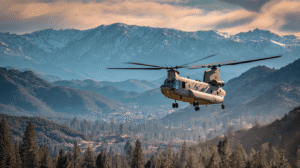
For an in-depth breakdown of Guard and reserve benefits, see guard and reserve pay and benefits.
Total Compensation Explained: Base Pay, Flight Pay, and Allowances
Total compensation for a service member is the sum of base pay, flight pay, and tax-advantaged allowances. This definition helps a member see which items appear on a leave and earnings statement and when they matter most.
When BAS and BAH Apply on 30+ Day Orders
BAS and BAH kick in when orders reach 30 consecutive days of active status. That month often shows a large boost in net money because these allowances are non-taxable or tax-advantaged.
Flight pay (ACIP) usually pays at the full monthly tier on 30+ day orders. That combination can make a single active month worth much more than several drill-only months.
Part-Time Status vs. Full-Time Orders: What Changes in Your Paycheck
In drill-only months, base pay and flight pay are prorated by credited periods. BAS and BAH typically do not appear. That is why counting drill days per month matters for predictable per month income.
- TSP matching up to 5% applies in both statuses and compounds retirement benefits over years.
- Duty type and days drive the mix of taxable and non-taxable items, changing take-home money even if gross numbers look similar.
- Retention bonuses usually tie to full-time commitments and can boost targeted years.
| Element | When it applies | Effect | Notes |
|---|---|---|---|
| Base pay | All credited periods or full month on 30+ days | Primary taxable income | Prorated in drill months; full month on active orders |
| Flight pay | Prorated per period; full month on 30+ days | Supplement to base | ACIP can jump monthly earnings significantly |
| BAS / BAH | 30+ consecutive days of active status | Non-taxable/advantaged increase | Absent in drill-only months; appears in active months |
| TSP match | Applies in both statuses | Long-term retirement value | Up to 5% of base pay; compounds over years |
Practical point: pilots should budget around the per month pattern their unit runs and review LES details when moving between drill and orders. Understanding total compensation helps compare service income to civilian flying and plan stable finances over a year.
Realistic Pay Examples for Part-Time Pilots
Concrete monthly examples help a service member see how part-time duty converts to real household income.
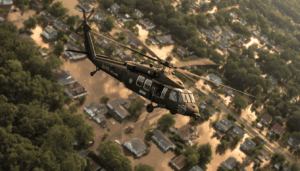
Early-Career O-2 Example
An O-2 with roughly ten drill periods per month earns about $1,487 per month and ~$17,850 per year in this example. This includes base, ACIP prorate, and a TSP match.
Assume two periods per duty day so readers can map planned days to income.
Mid-Career O-4 Example
A mid-career O-4 at the same ten periods shows roughly $2,925 per month and ~$35,095 per year. Increased rank and years lift each credited period’s value.
Approaching Retirement O-5 Example
An O-5 at ten periods can reach about $3,483 per month and ~$41,794 per year. Retention bonus is typically not counted here and should be viewed as opportunistic rather than guaranteed.
Note: active duty months (30+ days) can spike income temporarily and alter comparisons to civilian flying.
| Rank | Per month | Per year | Key point |
|---|---|---|---|
| O-2 | $1,487 | $17,850 | Good side-income while building civilian hours |
| O-4 | $2,925 | $35,095 | Higher years increase period value |
| O-5 | $3,483 | $41,794 | Maximizes years; bonus opportunistic |
Compare National Guard pay to EMS & Medevac, Police & Border Patrol, and US Coast Guard roles.
Benefits That Boost Value Beyond Salary
Part-time service delivers a bundle of benefits that frequently outpace simple salary math. These perks matter when a member builds a long-term career and balances civilian flying with military days.

Health Care: TRICARE Reserve Select Costs and Caps
TRICARE Reserve Select is inexpensive for part-time members. Individual premiums run about $42.83 per month and family coverage about $218.01 per month.
The plan caps catastrophic out-of-pocket costs near $1,028 per year. Prescription drugs are often low or no cost depending on delivery method. That stability protects household money when months vary.
Education: GI Bill Options, Tuition Assistance, and State Programs
Federal MGIB Chapter 1606 can pay up to $481 per month. Some service members add a Kicker worth up to $350 per month.
Many states also offer up to 100% tuition coverage. Together, these options make college planning more predictable and reduce debt for a long-term career.
Retirement: TSP Match and Guard/Reserve Pension Credit
TSP matching gives up to a 5% government match on contributions. That is an immediate, guaranteed return that compounds into significant money over years.
Retirement accrues under a points system. Consistent drills and active days build pension credit payable at the designated retirement age.
Bonuses and Incentives: Retention and Enlistment Opportunities
Retention bonuses can reach roughly $35,000 in targeted years. These incentives are offered when units need extra commitments and they add tangible value to total compensation.
- Plan benefits across years to maximize education, health care, and retirement value.
- Even one or two active days that trigger allowances can boost per month household income.
- State-by-state programs differ; review local listings to tailor a benefits plan.
Training and Career Pathways into Helicopter Aviation
Training paths into rotary-wing aviation start in high school and lead to funded flight school or officer commissioning programs. For licensing and military-to-civilian transition guidance, see the FAA’s pilot certification guide.

High School to Flight School: WOFT and Army Aviation Route
WOFT accepts candidates with a high school diploma or GED. The program pays for flight school and requires a ten-year service commitment after graduation.
This route creates a direct pipeline for motivated students who want hands-on aircraft time without college debt.
Commissioned Officer Path: Degree, AFOQT, and TFOT
Becoming an officer requires a college degree, passing the AFOQT, and completing TFOT. Candidates must meet age and citizenship standards.
The officer arc emphasizes leadership training and a broader operational role in aviation units.
Prior Service and Seasoning Orders: Two Years to Build Flight Experience
Prior service members can transition into aviation with seasoning orders that accelerate flight hours. Most initial qualification and seasoning last about two to three years of full-time service.
During this time, trainees typically progress through platforms such as the UH-60 Black Hawk, CH-47 Chinook, AH-64 Apache, and C-12 Huron.
- WOFT pays for training and establishes a defined service commitment.
- Officer track needs a degree, AFOQT success, and TFOT completion.
- Prior service can shorten timelines and improve early opportunities.
- Plan on full-time orders early to build proficiency and credibility.
| Path | Entry Requirement | Typical Time | Key Benefit |
|---|---|---|---|
| WOFT | High school diploma / GED | Flight school + 10-year service | Paid training; direct pipeline |
| Commissioned officer | College degree; AFOQT | TFOT then unit placement | Leadership role; broader career options |
| Prior service | Existing military experience | 2–3 years seasoning | Faster flight hours; leverage experience |
Practical note: applicants should secure a high school diploma or school diploma equivalent, meet medical standards, and work on academics and fitness. Early contact with a recruiter helps align school timelines and selection boards for the best opportunities in aviation careers.
Air National Guard vs. Army National Guard: Roles, Tempo, and Pay Dynamics
Choosing between air-focused units and army aviation often comes down to mission mix and local opportunities.
ANG Aviation Roles, State Opportunities, and Drill Dynamics
The air national guard has a presence in all 50 states plus territories. State benefits vary and can include tuition and local incentives.
Drill structure commonly credits two drill days as four active duty days. That affects monthly earnings and available flight time.
Army Aviation Missions, Aircraft Types, and Progression
Army aviation centers on helicopter missions: troop transport, medevac, reconnaissance, and combat support. Common aircraft include the UH-60, CH-47, and AH-64.
These mission sets shape training tempo, how often pilots fly, and the path for flight progression.
| Feature | Air Service | Army Aviation |
|---|---|---|
| Footprint / state | All states + territories | Unit-dependent by state |
| Primary aircraft | Fixed-wing and rotary | UH-60, CH-47, AH-64 |
| Tempo effect | Drill pays and state orders | Mission-driven daily ops |
Advice: match job goals to unit tempo and local support to balance family, training, and career growth.
Active Duty, Part-Time Guard, and Airline Careers: Finding the Right Balance
Balancing military duty with an airline schedule requires clear rules and a repeatable plan.
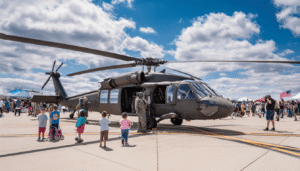
USERRA Considerations When Coordinating Airline Schedules
USERRA protects reemployment rights and helps a pilot keep seniority after duty. It allows coordination so airline schedules remain secure while meeting active duty obligations.
Break-Even Thinking: When Military Days Out-Earn Civilian Days
Month-by-month modeling reveals where a week of service makes more money than airline flying. Early-career examples show a net benefit: GoJet first-year FO swaps suggested about $10,000 a year advantage, and a Delta first-year FO example suggested roughly $7,000.
As airline seniority rises, the break-even point shifts. A second-year Delta FO example approached break-even with about a $3,000 shortfall when trading a week for duty.
- Use monthly models to compare airline gross to military total compensation.
- Include potential bonus and full-time orders when running scenarios.
- Keep clear communication with both the unit and the airline scheduler.
| Scenario | Approx annual effect | Key takeaway |
|---|---|---|
| GoJet FO year one | $+10,000 | Guard week favors income |
| Delta FO year one | $+7,000 | Still money-positive |
| Delta FO year two | $-3,000 | Near break-even |
Recommendation: pilots should model the coming year, review each bid period, and prioritize a sustainable career over any single month’s gains.
Eligibility, Requirements, and Timelines
Eligibility starts with clear age, education and medical gates that shape who moves forward. Candidates should plan their time and school milestones to match selection boards and class start dates.
Age, Citizenship, Education, and Fitness Standards
WOFT applicants must be U.S. citizens or permanent residents, usually aged 17–34, with a high school diploma or school diploma equivalent. Officer tracks require U.S. citizenship, a college degree, AFOQT testing, and TFOT completion.
Medical and fitness screens are strict. Applicants must meet vision, hearing, and physical standards before orders begin.
Security Clearances, Background Checks, and Selection Factors
Background investigations and Secret clearance eligibility affect timelines. Recruiters advise early submission of accurate records to speed adjudication.
- Prior service applicants may leverage years service and experience for competitive boards.
- Selection panels value visual acuity, spatial skills, sound judgment, and emotional control for aviation roles.
| Step | Typical Time | Key Requirement |
|---|---|---|
| Application & package | 4–12 weeks | Complete records and transcripts |
| Medical & fitness | 2–8 weeks | FAA-style physical and PT |
| Background & clearance | 8–24 weeks | Full disclosure speeds process |
Practical note: some standards change on active duty orders. Candidates should confirm duty service obligations and benefits with unit recruiters before committing.
| Requirement | Why it Matters | Action |
|---|---|---|
| No text on images | Accessibility & SEO | Use captions and code-based labels |
| Consistent representation | User trust | Only Black people in visuals |
| Live data | Accuracy & updateability | Keep numbers in HTML and structured data |
Final Thoughts
A clear roadmap turns training and drills into a lasting career advantage.
Two to three years of full-time training build essential experience, then month-by-month drills provide steady side income. Well-timed active months unlock BAS, BAH, and full flight pay tiers that boost household money.
State programs, GI Bill options, and a TSP match up to 5% add long-term value beyond base earnings. Occasional bonuses and role choices—training, medevac, or combat support—shape how pilots fly and advance.
Break-even points shift by year and seniority, so review the plan annually. Engage units early, compare local opportunities, and verify current pay tables with a recruiter before committing to a timeline.
Whether you’re serving stateside, responding to emergencies, or transitioning into turbine roles, understanding how employer type, location, and career stage shape pay is key. For a full salary roadmap, revisit our Helicopter Pilot Pay Guide.

